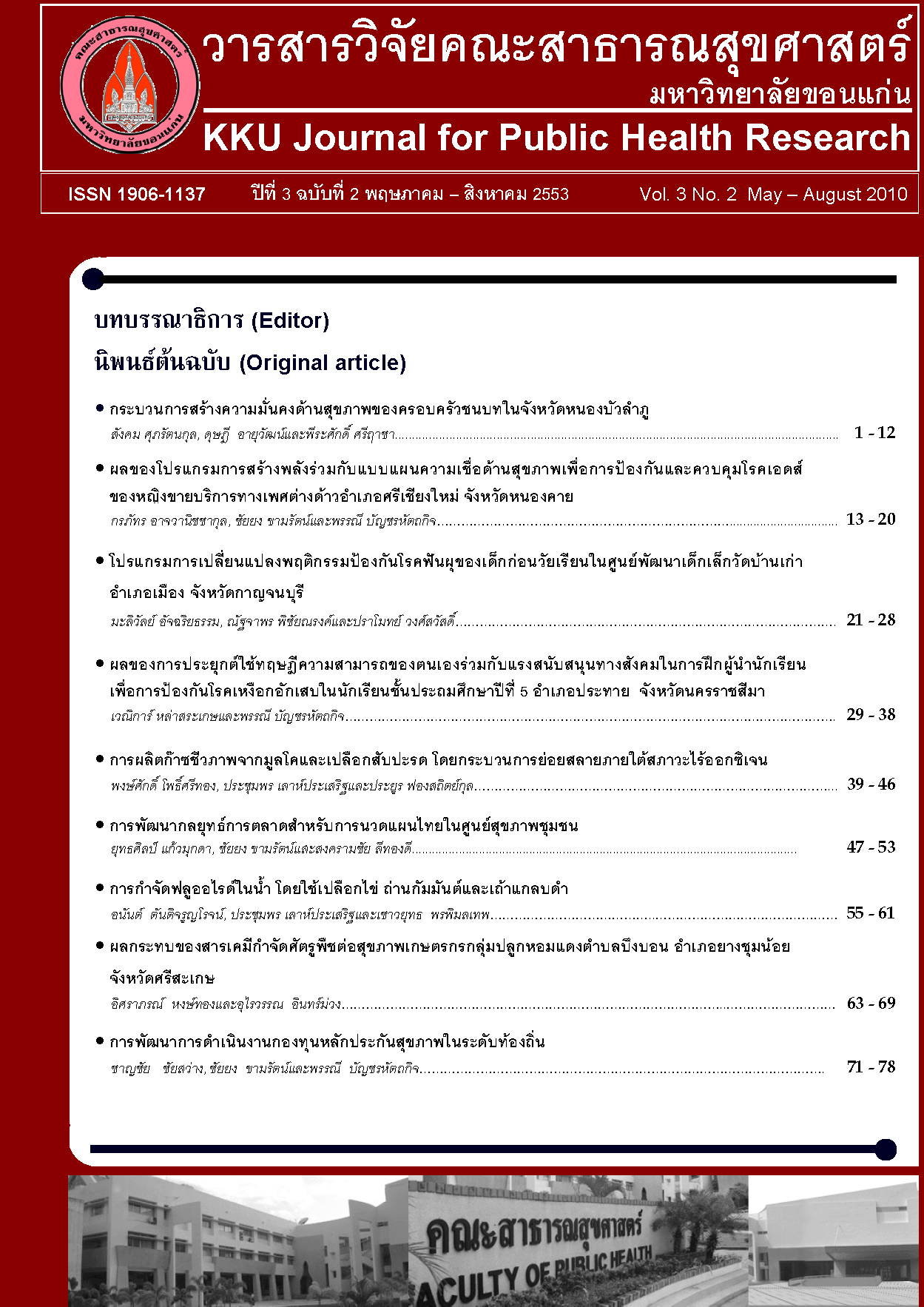Efficiency of Bio-compost Liquid Produced from Golden Apple Snail (Pomacea canaliculata) on Mung Bean Growth
Keywords:
golden apple snail, bio-compost liquid , mung bean EfficiencyAbstract
This investigation was undertaken as an experimental study. The research objectives was to 1) study
the appropriated ratio and retention time in producing bio-compost from golden apple snail; and 2) to study the
efficiency of the bio-compost obtained from the snails. The research design was factorial. (4x5 using four
different ratios (crushed golden apple snail: molasses :LDD.2) ; 0: 3: 1 (control), 2: 3: 1 ,3. : 3: 1, and 4: 3: 1
retention time ; 0, 1, 2, 3 after 4 weeks, and the efficiency of the compost was tested using the growth of mung
bean plants. The experiment was divided into three treatments; Control ratio 1: 1000, and 1: 2000. The growth
of mung bean plants in height and weight were examined every five days.
The ratio of 3:3:1with fermentation and a retention time of 2 weeks had the highest level of nutrients;
nitrogen (6.25), phosphorous (0.11), and potassium (2.09), respectively. The average of main nutrients in each
ratio and the retention time produced by the bio-compost was examined by a Two-way ANOVA and turned out
to be statistically significant (p <0.05). In addition an optimal growth of mung bean plants was related to a bioratio
of 1:1,000, and of 1:2,000 in comparison to the control group. The average growth ratio was statistically
significantly different (p<0.05).
In conclusion: Bio-compost liquid produced at a ratio of 2: 3: 1 and the retention time of two weeks
showed the highest level of primary nutrients. The application of bio-compost liquid in the ratio of 1: 1000 was
the best method applied.



